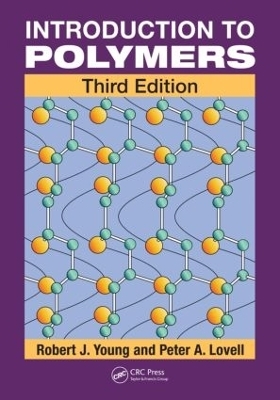
Introduction to Polymers
Crc Press Inc (Verlag)
978-0-8493-3929-5 (ISBN)
Thoroughly updated, Introduction to Polymers, Third Edition presents the science underpinning the synthesis, characterization and properties of polymers. The material has been completely reorganized and expanded to include important new topics and provide a coherent platform for teaching and learning the fundamental aspects of contemporary polymer science.
New to the Third Edition
Part I
This first part covers newer developments in polymer synthesis, including ‘living’ radical polymerization, catalytic chain transfer and free-radical ring-opening polymerization, along with strategies for the synthesis of conducting polymers, dendrimers, hyperbranched polymers and block copolymers. Polymerization mechanisms have been made more explicit by showing electron movements.
Part II
In this part, the authors have added new topics on diffusion, solution behaviour of polyelectrolytes and field-flow fractionation methods. They also greatly expand coverage of spectroscopy, including UV visible, Raman, infrared, NMR and mass spectroscopy. In addition, the Flory–Huggins theory for polymer solutions and their phase separation is treated more rigorously.
Part III
A completely new, major topic in this section is multicomponent polymer systems. The book also incorporates new material on macromolecular dynamics and reptation, liquid crystalline polymers and thermal analysis. Many of the diagrams and micrographs have been updated to more clearly highlight features of polymer morphology.
Part IV
The last part of the book contains major new sections on polymer composites, such as nanocomposites, and electrical properties of polymers. Other new topics include effects of chain entanglements, swelling of elastomers, polymer fibres, impact behaviour and ductile fracture. Coverage of rubber-toughening of brittle plastics has also been revised and expanded.
While this edition adds many new concepts, the philosophy of the book remains unchanged. Largely self-contained, the text fully derives most equations and cross-references topics between chapters where appropriate. Each chapter not only includes a list of further reading to help readers expand their knowledge of the subject but also provides problem sets to test understanding, particularly of numerical aspects.
Robert J. Young is a professor of polymer science and technology at the University of Manchester and a Fellow of the Royal Academy of Engineering. He has published extensively and is listed on ISIHighlyCited.com. His research focuses on the relationships between structure and properties in polymers and composites. Peter A. Lovell is a professor of polymer science at the University of Manchester. His research and publications focus on aspects of emulsion polymerization and related processes, especially in relation to understanding how to control the chemical structure, morphology and properties of the polymers produced.
Concepts, Nomenclature and Synthesis of Polymers. Characterization of Polymers. Phase Structure and Morphology of Bulk Polymers. Properties of Bulk Polymers. Answers to Problems. Index.
| Erscheint lt. Verlag | 13.7.2011 |
|---|---|
| Zusatzinfo | 52 Tables, black and white; 767 Illustrations, black and white |
| Verlagsort | Bosa Roca |
| Sprache | englisch |
| Maße | 178 x 254 mm |
| Gewicht | 1236 g |
| Themenwelt | Naturwissenschaften ► Biologie |
| Naturwissenschaften ► Chemie ► Organische Chemie | |
| Naturwissenschaften ► Chemie ► Technische Chemie | |
| Technik ► Maschinenbau | |
| Technik ► Umwelttechnik / Biotechnologie | |
| ISBN-10 | 0-8493-3929-4 / 0849339294 |
| ISBN-13 | 978-0-8493-3929-5 / 9780849339295 |
| Zustand | Neuware |
| Haben Sie eine Frage zum Produkt? |
aus dem Bereich


